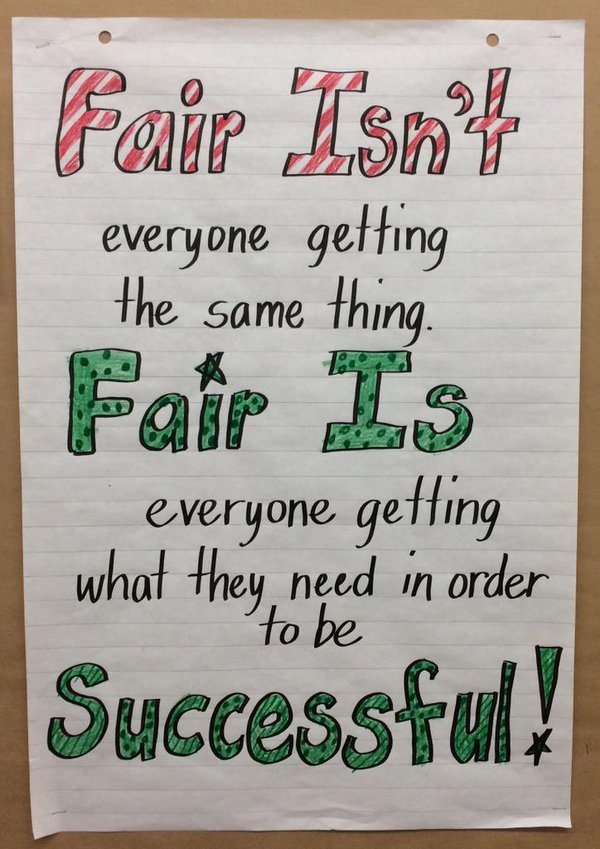This is not just for teachers who teach in schools where equity is a tangible priority. Regardless of your location, it is important to be mindful of how teaching with an equitable lens makes students more prepared for the day they step into the “real world”. Here are 3 ways to a more equitable classroom:
1) Learn From Your Students
Before we even get into creating a more equitable classroom, we must first understand that equity derives from established (explicitly or implicitly) difference. We often get so caught up in teaching to the curriculum that we overlook the obvious fact that students learn deeper when they can relate to the curriculum. So before we even get to the curriculum, we have to know our students. In order to know our students, we have to learn about them! Set aside time to learn about the culture of your students. That way, when you design a lesson, you aren’t just navigating in the dark holding the dim light of curriculum.
2) What Are Your Resources?
Do your resources reflect the students you serve? Are you reading about characters that only expose a singular type of identity? How about the topics or themes you must cover over the course of a semester? When you reference particular figures, using resources that students can relate to creates closeness between the teacher, the student, and the topic. And you don’t have to revamp your entire library or re-do one of your “binders”, you can do this by allowing your students to do the investigation. The Internet is a beautiful thing when used correctly!
3) Student Voice
Tests are great. They are a quick and easy way of assessing all of your students. Making students work independently (and also quietly) is a go-to method of ensuring that most of your students are on task. But students, like us adults, learn differently. We also demonstrate our learning differently. Differentiating the instruction and the assessment is something all teachers are familiar with. But once the school year gets into full gear, how many of us actually practice this pedagogy? (I myself am guilty of sliding into the traditional model of teaching too often). Traditional modes of teaching give us a nice curve when it comes to assessing the “haves” and “have-nots”, but even if 90% of your students are getting the material and demonstrating their knowledge on a test or through an assignment, it not good enough. Explore your students’ alternative ways of knowing and demonstrating knowledge. Demonstrating comprehension of a phenomenon in science can be assessed on a test or through a students’ composition of a rap song.
At the end of the day, we all are trying to make sure that every last one of our students “gets it”. The “gets it” part extends beyond the curriculum to include an understanding of how they are important and contribute to the world. These are three ways to consider equity in your classroom and hopefully they will help you ensure that your students succeed in “getting it” on both levels.
[share title=”Share this Post” facebook=”true” twitter=”true” google_plus=”true”]

